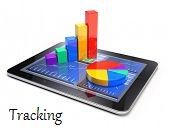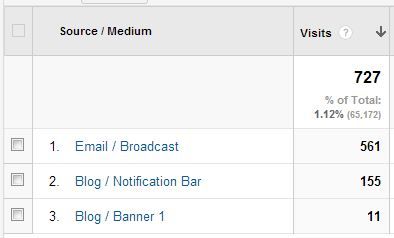How to Setup Campaigns and Track Different Traffic Sources in Google Analytics

I have always been an advocate of data driven marketing decisions. Intuition is great but only when the data is unavailable. With data, decisions are always better than emotional guess work. Marketers never had this kind of data even 20 years back. Now with so much data around testing, tracking and optimizing is no longer optional.
In this article you will find out how to setup Campaigns for different promotions and track those traffic sources using UTM tracking codes in Google Analytics. All websites installed with Google analytics has the capability to track individual campaigns. A campaign is nothing but a particular promotion that you are running and it may be a free one or a paid one. For example, you can run a campaign for the promotion of the sales of your latest eBook. The traffic may come from your blog, newsletter, paid ads on Google, Facebook, other websites and so on.
To track the traffic from a particular source you need to build a new URL for it and then use that URL in the campaign that you are setting up. This URL will lead back to your original page but it will have tracking parameters in the URL which Google Analytics will pickup. To build a URL for a specific campaign, you should use the Google URL builder.
In the URL builder, you have to enter the URL and the different parameters as shown in the screenshot below.

I will show you a live example of how I use Campaigns to track the effectiveness of my promotion. In one of the blogs I own, I have created a page with reviews of 5 books and the links point to Flipkart and Amazon. These links are affiliate links and if someone clicks on the URL and buys a book, I would get a commission from Flipkart.
So I am naming this Campaign as ‘Books Promo’. Any effort to drive traffic to this page is a part of this campaign. In the above URL builder, the campaign name should be the same for all the different links generated if all those links are used for a particular promotion.
There will be 4 different ways I will be driving traffic to this page (or let’s say this campaign). Different ways would mean a combination of different sources and mediums.
- Through the notification bar in my blog
- Through a banner in my blog
- Through an Email Broadcast Message
- Through the footer link in all my outgoing emails (Newsletters)
The link for the notification bar would look like this:
bikeadvice.in/books/?utm_source=Blog&utm_medium=Notification&utm_campaign=Books+Promo
Here you can observe that the source is the ‘Blog’. Medium is named as ‘Notification’ and the campaign name is ‘Books Promo’.
Now, if I am going to promote this page via a Banner in the same blog, the medium is different but the campaign and the source or the same.
bikeadvice.in/books/?utm_source=Blog&utm_medium=Banner+1&utm_campaign=Books+Promo
I can also promote the same campaign in another blog via paid advertising and I can change the name of the source in the URL appropriately.
After driving traffic to the different URLs, the statistics can be tracked through Google Analytics. For that, I need to login into Google Analytics and select ‘Campaigns’ under the traffic sources section.

After selecting the particular campaign (in this case ‘Books Promo’) I am able to see the amount of traffic driven by each campaign. In this case I have not paid for any advertising and I can use these statistics to find out which source has sent me the most traffic.

I am also able to see which source sent me the most high quality traffic by looking at the time spent on the site and with these data I can make data driven marketing decisions. If I find out that the Blog Banner 1 is getting very few clicks (which it does) I can decide to stop promoting the page via blog banner and focus on other sources.
I hope you have got a good idea about Campaign tracking in Google Analytics. I have not gone into how to setup Goals in Google Analytics in this post and it will be a topic for another article.
With Goals, it becomes even more powerful and you can traffic which Medium & Source sent the traffic that converted into Goals. For example, I can setup an Event and setup clicking on the affiliate link as a Goal. Let’s say for example, both the Email Footer and the Blog Notification Bar sends me 100 visitors per day. But the traffic from Email Footer may lead to more clicks on affiliate links which means that Email Footer source is sending me traffic of higher quality.
With Web Analytics, there is no limit to testing, tracking and optimization for maximum results. And the icing on the cake is that this stuff is exciting! When there is no data available, you can do experiments based on intuition and then you can validate your intuition using the data. If it works, scale it… else iterate.
Please leave a comment if you have any questions!